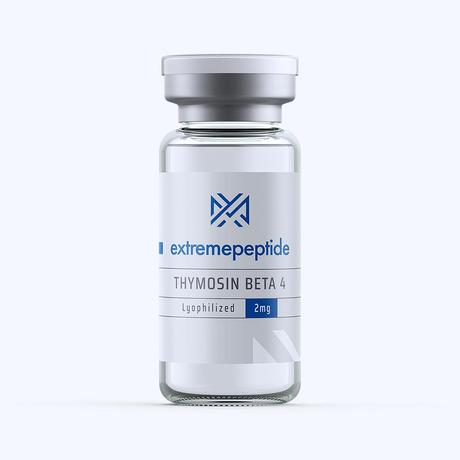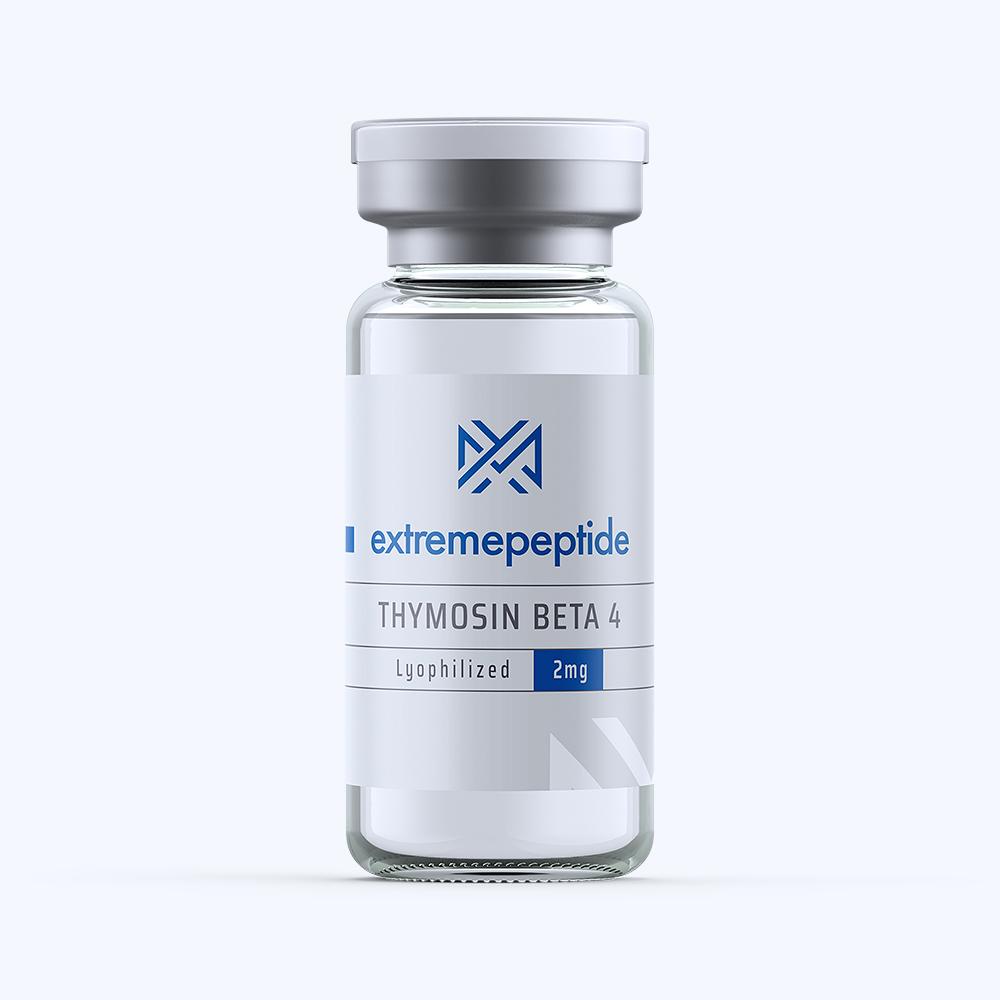Sale!


Thymosin Beta-4 (TB500) 2mg
In stock
$29.99$39.99
- Concentration
- 2 mg per vial
Free & Fast
Shipping
Earn
Rewards
Excellent
Service

$29.99$39.99
Free & Fast
Shipping
Earn
Rewards
Excellent
Service
| Property | Value |
|---|---|
| Molecular Formula | C212H350N56O78S |
| Molecular Weight | 4963 |
| Monoisotopic Mass | 4960.4863169 |
| Polar Area | 2250 |
| Complexity | 12200 |
| XLogP | -43.5 |
| Heavy Atom Count | 347 |
| Hydrogen Bond Donor Count | 72 |
| Hydrogen Bond Acceptor Count | 88 |
| Rotatable Bond Count | 180 |
| Physical Appearance | Fine White Lyophilized Powder |
| Stability | Lyophilized protein is to be stored at -20°C. It is recommended to aliquot the reconstituted (dissolved) protein into several discrete vials in order to avoid repeated freezing and thawing. Reconstituted protein can be stored at 4°C |
| PubChem LCSS | Thymosin Beta-4 (TB500) 2mg Laboratory Chemical Safety Summary |
| Property | Property Value |
|---|---|
| CID | 45382195 |
| CAS | 77591-33-4 |
| InChI | InChI=1S/C212H350N56O78S/c1-16-106(7)166(261-190(323)131(64-75-160(292)293)231-172(305)109(10)228-174(307)134(78-91-347-15)245-196(329)140(98-165(302)303)255-201(334)147-53-39-88-266(147)209(342)135(52-29-38-87-221)250-197(330)139(97-164(300)301)254-198(331)143(100-269)229-113(14)276)204(337)246-129(62-73-158(288)289)187(320)233-118(47-24-33-82-216)179(312)252-137(94-114-42-19-18-20-43-114)194(327)253-138(96-163(298)299)195(328)237-121(50-27-36-85-219)181(314)258-144(101-270)199(332)239-119(48-25-34-83-217)178(311)251-136(92-104(3)4)193(326)236-116(45-22-31-80-214)175(308)235-122(51-28-37-86-220)189(322)263-168(110(11)273)207(340)249-133(66-77-162(296)297)192(325)264-169(111(12)274)206(339)248-126(58-69-152(224)279)184(317)243-128(61-72-157(286)287)186(319)234-120(49-26-35-84-218)180(313)256-142(95-153(225)280)211(344)268-90-40-54-148(268)202(335)257-141(93-105(5)6)210(343)267-89-41-55-149(267)203(336)259-145(102-271)200(333)238-117(46-23-32-81-215)177(310)244-132(65-76-161(294)295)191(324)265-170(112(13)275)208(341)262-167(107(8)17-2)205(338)247-130(63-74-159(290)291)188(321)241-125(57-68-151(223)278)183(316)242-127(60-71-156(284)285)185(318)232-115(44-21-30-79-213)176(309)240-124(56-67-150(222)277)173(306)227-108(9)171(304)226-99-154(281)230-123(59-70-155(282)283)182(315)260-146(103-272)212(345)346/h18-20, 42-43, 104-112, 115-149, 166-170, 269-275H, 16-17, 21-41, 44-103, 213-221H2, 1-15H3, (H2, 222, 277)(H2, 223, 278)(H2, 224, 279)(H2, 225, 280)(H, 226, 304)(H, 227, 306)(H, 228, 307)(H, 229, 276)(H, 230, 281)(H, 231, 305)(H, 232, 318)(H, 233, 320)(H, 234, 319)(H, 235, 308)(H, 236, 326)(H, 237, 328)(H, 238, 333)(H, 239, 332)(H, 240, 309)(H, 241, 321)(H, 242, 316)(H, 243, 317)(H, 244, 310)(H, 245, 329)(H, 246, 337)(H, 247, 338)(H, 248, 339)(H, 249, 340)(H, 250, 330)(H, 251, 311)(H, 252, 312)(H, 253, 327)(H, 254, 331)(H, 255, 334)(H, 256, 313)(H, 257, 335)(H, 258, 314)(H, 259, 336)(H, 260, 315)(H, 261, 323)(H, 262, 341)(H, 263, 322)(H, 264, 325)(H, 265, 324)(H, 282, 283)(H, 284, 285)(H, 286, 287)(H, 288, 289)(H, 290, 291)(H, 292, 293)(H, 294, 295)(H, 296, 297)(H, 298, 299)(H, 300, 301)(H, 302, 303)(H, 345, 346) |
| InChIKey | UGPMCIBIHRSCBV-UHFFFAOYSA-N |
| Canonical SMILES | CCC(C)C(C(=O)NC(CCC(=O)O)C(=O)NC(CCCCN)C(=O)NC(CC1=CC=CC=C1)C(=O)NC(CC(=O)O)C(=O)NC(CCCCN)C(=O)NC(CO)C(=O)NC(CCCCN)C(=O)NC(CC(C)C)C(=O)NC(CCCCN)C(=O)NC(CCCCN)C(=O)NC(C(C)O)C(=O)NC(CCC(=O)O)C(=O)NC(C(C)O)C(=O)NC(CCC(=O)N)C(=O)NC(CCC(=O)O)C(=O)NC(CCCCN)C(=O)NC(CC(=O)N)C(=O)N2CCCC2C(=O)NC(CC(C)C)C(=O)N3CCCC3C(=O)NC(CO)C(=O)NC(CCCCN)C(=O)NC(CCC(=O)O)C(=O)NC(C(C)O)C(=O)NC(C(C)CC)C(=O)NC(CCC(=O)O)C(=O)NC(CCC(=O)N)C(=O)NC(CCC(=O)O)C(=O)NC(CCCCN)C(=O)NC(CCC(=O)N)C(=O)NC(C)C(=O)NCC(=O)NC(CCC(=O)O)C(=O)NC(CO)C(=O)O)NC(=O)C(CCC(=O)O)NC(=O)C(C)NC(=O)C(CCSC)NC(=O)C(CC(=O)O)NC(=O)C4CCCN4C(=O)C(CCCCN)NC(=O)C(CC(=O)O)NC(=O)C(CO)NC(=O)C |
| IUPAC Name | 4-[[2-[2-[[2-[[2-[[2-[[2-[[2-[[2-[[2-[[2-[[2-[[2-[[1-[2-[[1-[2-[[2-[[2-[[2-[[2-[[2-[[2-[[2-[[2-[[2-[[2-[[2-[[2-[[2-[[2-[[2-[[2-[[2-[[2-[2-[[2-[[2-[[1-[2-[[2-[(2-acetamido-3-hydroxypropanoyl)amino]-3-carboxypropanoyl]amino]-6-aminohexanoyl]pyrrolidine-2-carbonyl]amino]-3-carboxypropanoyl]amino]-4-methylsulfanylbutanoyl]amino]propanoylamino]-4-carboxybutanoyl]amino]-3-methylpentanoyl]amino]-4-carboxybutanoyl]amino]-6-aminohexanoyl]amino]-3-phenylpropanoyl]amino]-3-carboxypropanoyl]amino]-6-aminohexanoyl]amino]-3-hydroxypropanoyl]amino]-6-aminohexanoyl]amino]-4-methylpentanoyl]amino]-6-aminohexanoyl]amino]-6-aminohexanoyl]amino]-3-hydroxybutanoyl]amino]-4-carboxybutanoyl]amino]-3-hydroxybutanoyl]amino]-5-amino-5-oxopentanoyl]amino]-4-carboxybutanoyl]amino]-6-aminohexanoyl]amino]-4-amino-4-oxobutanoyl]pyrrolidine-2-carbonyl]amino]-4-methylpentanoyl]pyrrolidine-2-carbonyl]amino]-3-hydroxypropanoyl]amino]-6-aminohexanoyl]amino]-4-carboxybutanoyl]amino]-3-hydroxybutanoyl]amino]-3-methylpentanoyl]amino]-4-carboxybutanoyl]amino]-5-amino-5-oxopentanoyl]amino]-4-carboxybutanoyl]amino]-6-aminohexanoyl]amino]-5-amino-5-oxopentanoyl]amino]propanoylamino]acetyl]amino]-5-[(1-carboxy-2-hydroxyethyl)amino]-5-oxopentanoic acid |
Generated by Extreme Peptide with Open Babel, version 2.3.1, http://openbabel.org (accessed April 20, 2025)
Accurate research is our priority.
Get 25% off your first order and all the latest information on events, sales, & offers.
We care about keeping your data private. Read our Privacy Policy.

